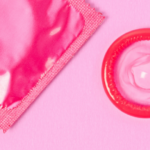Question
How long does sperm live after ejaculation?
Answer
The life span of sperm after ejaculation depends on where they end up.
How long does sperm live inside the body?
It takes somewhere around 69 to 80 days for a sperm to develop in the testes before it moves through the epididymis, which takes at least another 2 days. So, by the time your sperm leave your body, they’re already up to around three months old.
Once sperm is outside your body, they’re vulnerable. Even when semen is collected and analysed straight away in a laboratory, in about half of all samples one out of five sperm will be dead, and one-third not be moving.
How long does sperm live in a woman?
In the vagina, sperm live for two to three days.
In the cervix, sperm can live up to one week.
There’s a report of live sperm being recovered from the fallopian tubes of a woman 25 days after sex, raising the possibility that a pregnancy might be conceived more than three weeks after intercourse.
How long does sperm live in a condom?
Sperm ejaculated into condoms can survive for a few hours, whereas sperm on fabric or skin will only survive for a few minutes.
How long can you store sperm?
Under the right conditions, sperm can be kept alive in a laboratory for at least a week. When they’re frozen in a laboratory for storage, sperm can be thawed and revived, for successful use in IVF, many years later.















